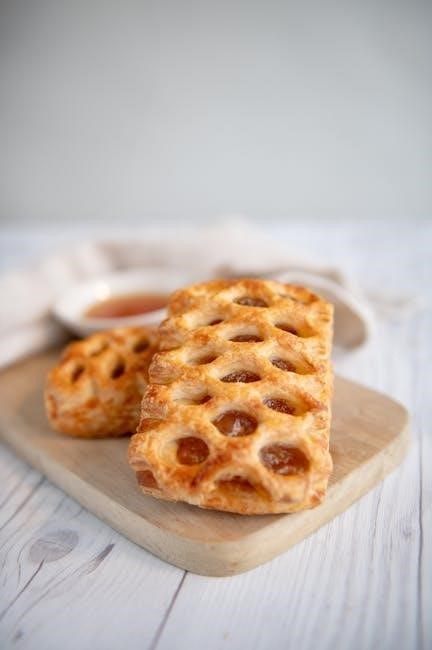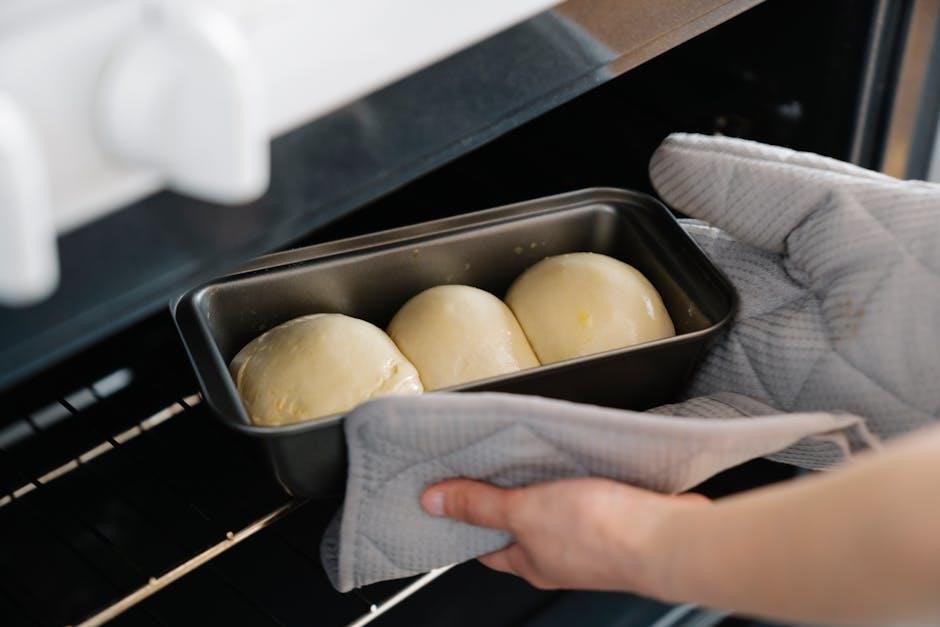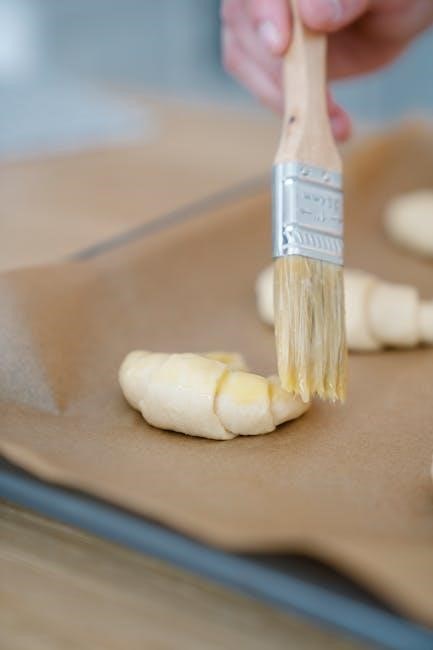Sculpey Oven Bake Clay is a popular polymer clay ideal for crafting jewelry, ornaments, and decorative items. It’s versatile, easy to shape, and cures in a home oven, making it perfect for both beginners and experienced crafters.
What is Sculpey Oven Bake Clay?
Sculpey Oven Bake Clay is a type of polymer clay designed for crafting and art projects. It softens when kneaded and hardens when baked in a home oven. Perfect for creating jewelry, ornaments, and decorative items, it’s known for its durability and flexibility. Available in various colors, it can be mixed and shaped easily. Once baked at 275°F (135°C), it becomes long-lasting and resistant to damage. Ideal for both beginners and experienced crafters, it’s a versatile medium for creative expression.
Why Use Sculpey Oven Bake Clay?
Sculpey Oven Bake Clay is a top choice for crafters due to its ease of use and versatility. It’s perfect for creating detailed designs, jewelry, and decorative items. The clay is soft and pliable, making it easy to shape and mold. Once baked, it becomes durable and long-lasting, ensuring your creations remain vibrant and intact; Its oven-bake feature eliminates the need for special tools, making it accessible to crafters of all skill levels. This makes Sculpey a favorite for both personal projects and professional crafting endeavors.
Preparation for Baking
Preheating your oven to the correct temperature is essential. Ensure the clay is at room temperature and place pieces on a baking sheet lined with parchment paper. Let cool completely before handling to avoid cracking.
Materials Needed
To begin, gather essential materials: Sculpey Oven Bake Clay, a home oven, a baking sheet, parchment paper, and tools for shaping, such as rollers or cutters. A thermometer ensures accurate oven temperature. Optional items include gloves for handling and a craft mat for workspace protection. Preheat your oven to the recommended temperature, typically 275°F (135°C), before baking. These materials are crucial for a smooth and successful baking process.
Conditioning the Clay
Conditioning Sculpey Oven Bake Clay involves softening it to make it pliable and easy to work with. Start by kneading the clay with your hands or a pasta machine to remove any stiffness. If the clay is too hard, warming it slightly in your hands can help. Ensure there are no air pockets by rolling and folding the clay. Avoid over-conditioning, as this can make the clay too soft. Stop once the clay feels workable for shaping and designing your project. Proper conditioning ensures a smooth crafting experience.
Shaping and Designing
Sculpey Oven Bake Clay allows for endless creativity in shaping and designing. Start with basic forms like balls, rolls, or sheets, then use tools to refine details and patterns. Layered elements and textures can add complexity. Experiment with stamps, molds, or hand-sculpting for unique designs. This versatile clay is perfect for crafting jewelry, miniatures, or ornaments, enabling both simple and intricate creations. Its pliable nature makes it ideal for artistic expression and precision crafting.
Creating Basic Shapes
Creating basic shapes with Sculpey Oven Bake Clay is straightforward. Roll out the clay evenly using a roller or your hands to achieve desired thickness. Start with simple forms like sheets, balls, or rolls. Use tools like cutters or molds to create uniform shapes. For consistent results, ensure thickness is even to prevent uneven baking. Basic shapes are the foundation for more complex designs, allowing you to build and layer details as needed. This step is perfect for beginners to practice and refine their skills before moving to advanced techniques.
Advanced Design Techniques
Advanced techniques with Sculpey Oven Bake Clay include layering, blending, and intricate detailing. Use tools or household items to create textures or patterns. For complex designs, build up layers gradually, ensuring each layer is partially baked before adding more details. Blending colors can create unique marbled effects. Experiment with embedding small objects like beads or fabric for added dimension. Proper spacing between elements is crucial to prevent warping during baking. These techniques allow for highly detailed and personalized creations, making your projects truly stand out.

Baking Instructions
Bake Sculpey Oven Bake Clay at 275°F (135°C) for 15-30 minutes, depending on thickness. Monitor closely to avoid overheating and ensure proper curing for durability.
Preheating the Oven
Preheat your oven to 275°F (135°C) for Sculpey Oven Bake Clay. Ensure the oven reaches the correct temperature before baking to guarantee proper curing. Use an oven thermometer for accuracy, as incorrect temperatures can lead to underbaked or overbaked clay. Place the clay on a baking sheet lined with parchment paper, avoiding overcrowding for even heating. Proper preheating is essential for the clay to harden correctly, ensuring durability and a professional finish. Always follow the recommended temperature to achieve the best results.
Baking Time and Temperature
Bake Sculpey Oven Bake Clay at 275°F (135°C) for 15 minutes per 1/4 inch of thickness. Monitor the oven to ensure the temperature remains consistent. Bake for the recommended time to avoid underbaking or overbaking. Use an oven thermometer for accuracy. For thicker pieces, increase baking time accordingly, but never exceed 275°F, as this can damage the clay. Proper baking ensures the clay hardens correctly, making it durable and long-lasting. Always follow the instructions for best results.
Post-Baking Steps
After baking, allow the clay to cool completely before handling. Sand gently to smooth edges and surfaces. Seal with varnish to protect and enhance the finish.
Cooling and Handling
After baking, allow the Sculpey clay to cool completely on a heat-resistant surface. Avoid handling the piece while it’s still warm, as it may bend or distort. Once cooled, carefully remove it from the baking surface. If the clay feels sticky or soft, it may need additional baking time. Handle cooled pieces gently to prevent cracking or breaking. Use gloves to avoid transferring oils from your skin to the clay. Proper cooling ensures the clay hardens evenly and retains its shape.
Sanding and Sealing
After cooling, gently sand the Sculpey clay with fine-grit sandpaper to smooth rough edges or surfaces. For a glossy finish, apply a clear varnish or resin, following the product’s instructions. Sealing protects the clay from dust and enhances durability. For added protection, a light coat of wax can be applied before sealing. Sanding and sealing ensure a professional finish and extend the life of your Sculpey creations, making them more resistant to wear and tear.

Safety Guidelines
Ensure proper ventilation when baking Sculpey clay to avoid inhaling fumes. Keep children away from hot ovens and sharp tools. Always follow package instructions for safe handling and baking to prevent accidents and ensure a safe crafting experience.
Proper Ventilation
Proper ventilation is essential when working with Sculpey Oven Bake Clay. Open windows and use fans to circulate air, reducing fume inhalation during baking. Avoid breathing directly near the oven, as polymer clay releases minimal but potentially irritating vapors. Ensure good airflow in your workspace to maintain a safe and healthy environment while crafting with Sculpey clay.
Oven Safety Tips
Always preheat your oven to the recommended temperature of 275°F (135°C) for Sculpey clay. Use an oven thermometer to ensure accuracy. Place clay pieces on a baking sheet lined with parchment paper, avoiding direct contact with the oven rack. Never leave the oven unattended while baking clay. Keep children and pets away, and avoid opening the oven door excessively to prevent heat loss and uneven curing. Follow these tips for safe and successful baking of your Sculpey creations.
Tips and Tricks
For best results, bake Sculpey clay at 275°F, ensuring even curing. Use parchment paper to prevent sticking, and avoid overloading the oven. Let pieces cool completely before handling for a professional finish.
Avoiding Common Mistakes
When working with Sculpey Oven Bake Clay, avoid overheating, as it can cause discoloration or cracking. Ensure the oven is preheated correctly and use a thermometer for accuracy. Prevent uneven baking by placing pieces on parchment-lined trays. Keep clay away from direct sunlight to avoid softening. Store leftover clay in airtight containers to maintain pliability. Avoid using too much liquid additives, as this can weaken the final product. Always follow the recommended baking time and temperature to achieve optimal results.
Storing Leftover Clay
Proper storage is essential to maintain the quality of Sculpey Oven Bake Clay. Store leftover clay in airtight containers or plastic wrap to prevent drying out. Keep it in a cool, dry place away from direct sunlight. Ensure the clay is clean and free from residue before storage. Label containers for easy identification. Avoid mixing different clay types or colors during storage. This method preserves the clay’s pliability and ensures it remains ready for future projects.

Troubleshooting
Common issues include clay not hardening or cracking. Ensure oven temperature is accurate, and thickness guidelines are followed. Avoid overbaking, as it can cause discoloration or brittleness.
Common Issues and Solutions
Common issues with Sculpey Oven Bake Clay include uneven baking, cracking, or insufficient hardening. To resolve these, ensure accurate oven temperature, avoid overbaking, and maintain uniform thickness. For cracks, gently blend edges before baking. If clay remains soft, check thickness and baking time. Proper ventilation is essential to prevent fumes. Always follow package instructions for best results and consult troubleshooting guides for specific solutions to common problems.

Leave a Reply